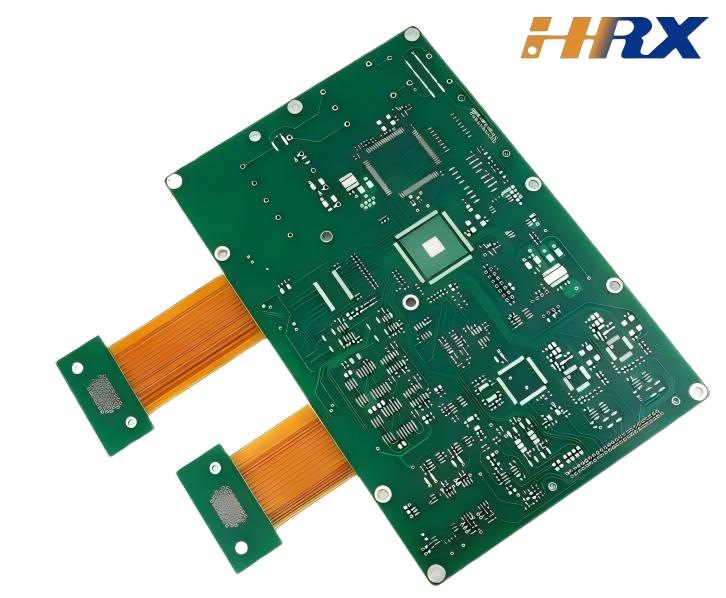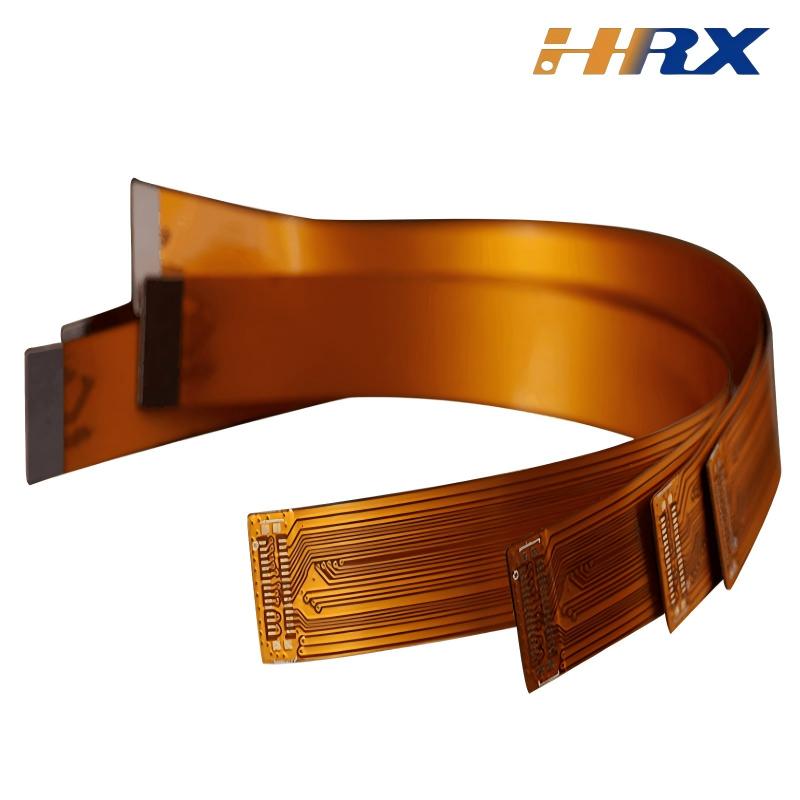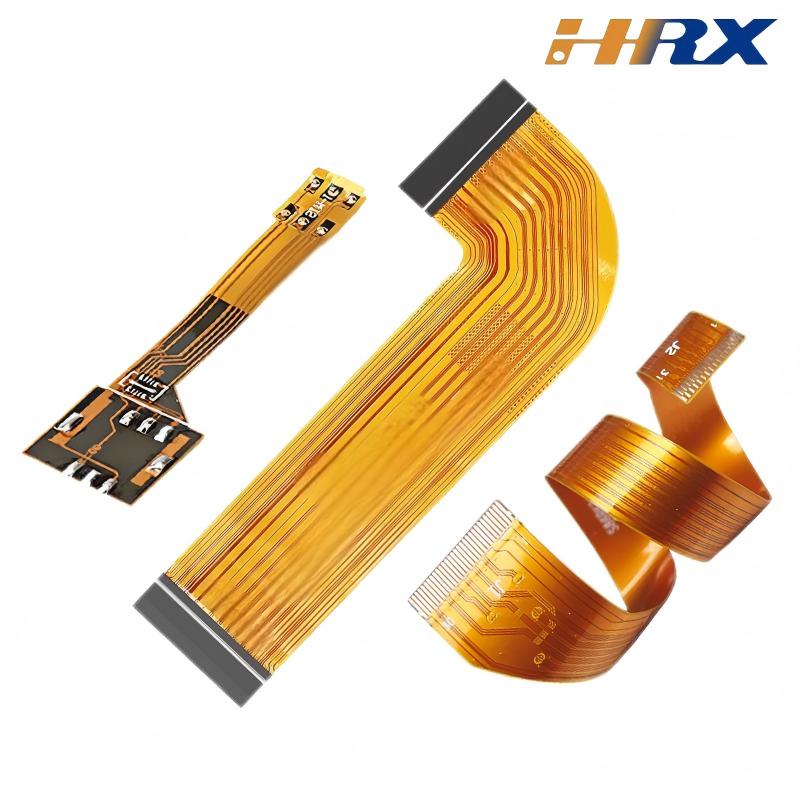Search
Mastering the Design and Production of High-Quality Rigid-Flex Printed Boards: Key Insights and Expert Solutions
- May 24,2025
-
Share
In the rapidly evolving landscape of modern electronics, rigid-flex printed boards (RFPCBs) have become indispensable, revolutionizing the way electronic devices are designed and manufactured. As a leading global ODM/OEM manufacturer specializing in Flexible Printed Circuits (FPCs), Printed Circuit Boards (PCBs), and Rigid-Flex Printed Boards, Shenzhen Huaruixin Electronics Co., Ltd. understands the intricacies involved in creating top-tier RFPCBs. In this blog, we will explore the critical considerations in the design and production of premium rigid-flex printed boards, highlighting our expertise and capabilities in delivering high-performance solutions.

Design Considerations
Material Selection: The Foundation of Performance
The choice of materials is a pivotal factor in determining the performance, reliability, and durability of rigid-flex printed boards. For the flexible sections, polyimide (PI) films are the industry standard due to their exceptional thermal stability, chemical resistance, and mechanical flexibility. PI films can withstand repeated bending and flexing cycles without significant degradation, making them ideal for applications requiring dynamic movement. On the other hand, for the rigid components, materials such as FR-4, a flame-retardant epoxy glass laminate, are commonly utilized for their excellent electrical insulation properties and mechanical strength.
At Shenzhen Huaruixin Electronics Co., Ltd., we source only the highest quality materials from trusted suppliers, ensuring that our rigid-flex printed boards meet the most stringent industry standards. Our comprehensive material selection process includes rigorous testing and inspection to verify the performance and compatibility of each material, guaranteeing the long-term reliability of our products.
Layer Stack-up Design: Optimizing Electrical and Mechanical Performance
The layer stack-up design is a crucial aspect of rigid-flex printed board design, as it directly impacts the electrical performance, signal integrity, and mechanical reliability of the board. A well-designed layer stack-up should carefully consider factors such as impedance control, crosstalk prevention, power distribution, and thermal management.
Our team of experienced designers at Shenzhen Huaruixin Electronics Co., Ltd. utilizes advanced design tools and simulation software to create customized layer stack-up solutions tailored to the specific requirements of each project. We conduct in-depth analyses and simulations to optimize the layer stack-up for maximum performance, ensuring that the board meets the electrical and mechanical specifications of the application.
Flex Region Design: Balancing Flexibility and Reliability
The flex regions are the defining feature of rigid-flex printed boards, providing the flexibility and mobility required for complex electronic assemblies. Designing the flex regions requires a deep understanding of the material properties, mechanical constraints, and application requirements. Key considerations in flex region design include the bending radius, the number of bends, the orientation of the flex sections, and the stress relief mechanisms.
Our design experts at Shenzhen Huaruixin Electronics Co., Ltd. have extensive experience in designing flex regions for a wide range of applications. We employ advanced design techniques and best practices to ensure that the flex regions can withstand the expected mechanical stresses and strains without compromising the signal integrity or electrical performance of the board.
Production Considerations
Lamination Process: Ensuring a Strong and Reliable Bond
The lamination process is a critical step in the production of rigid-flex printed boards, as it involves bonding the rigid and flexible layers together to form a single, integrated structure. Proper control of the lamination parameters, including temperature, pressure, and time, is essential to ensure a strong and reliable bond between the layers. Any deviation from the optimal lamination conditions can result in delamination, voids, or uneven thickness, which can compromise the performance and reliability of the board.
At Shenzhen Huaruixin Electronics Co., Ltd., we have state-of-the-art lamination equipment and a highly skilled production team with extensive experience in laminating rigid-flex printed boards. Our technicians closely monitor and control the lamination process to ensure that the boards are laminated to the highest quality standards, ensuring the long-term reliability and performance of our products.
Drilling and Plating: Precision and Accuracy for Electrical Connectivity
Drilling accurate holes for vias and through-holes is essential for establishing reliable electrical connections in rigid-flex printed boards. In the case of rigid-flex boards, the drilling process requires special care to avoid damaging the flexible layers, which can be easily punctured or torn. After drilling, the plating process is used to coat the holes with a conductive material, such as copper, to form electrical pathways between the layers.
At our manufacturing facility, we utilize advanced drilling and plating technologies to ensure the precision and accuracy of the holes and the quality of the plating. Our automated drilling machines are capable of drilling holes with high precision and repeatability, while our plating process is optimized to provide uniform and consistent plating thickness, ensuring the electrical conductivity and mechanical strength of the vias.
Quality Control: Ensuring Product Excellence
Quality control is an integral part of our manufacturing process at Shenzhen Huaruixin Electronics Co., Ltd. We have a comprehensive quality control system in place to ensure that every rigid-flex printed board we produce meets the highest quality standards. Our quality control process includes incoming material inspection, in-process inspection, and final product testing to detect and prevent any defects or quality issues.
We use advanced testing equipment, such as automated optical inspection (AOI) machines, X-ray inspection systems, and electrical testing equipment, to perform rigorous inspections and tests on our products. Our quality control team is trained to identify and address any quality issues promptly, ensuring that our customers receive only the highest quality products.
As a leading global manufacturer of FPCs, PCBs, and rigid-flex printed boards, Shenzhen Huaruixin Electronics Co., Ltd. is committed to providing our customers with high-quality products, exceptional service, and innovative solutions. Whether you need a standard rigid-flex printed board or a custom-designed solution, our team of experts is here to help. Visit our website at www.hrxfpc.com or contact us at sales@hrxfpc.com to learn more about our products and services and how we can assist you with your next project.

Let’s talk! We’ll provide the perfect solution for you!
-
 Huaruixin Electronics mainly produces printed circuit boards as the core business, to provide customers with one-stop solutions for FPC/PCB production, components sourcing and Assembly.
Huaruixin Electronics mainly produces printed circuit boards as the core business, to provide customers with one-stop solutions for FPC/PCB production, components sourcing and Assembly. - WHAT WE DO — PCB Design Solutions — Flex PCB Production — Components Sourcing — FPC&PCB Assembly
- PRODUCTS — Single Sided Flexible Circuits — Double Sided Flexible Circuits — Multilayer Flexible Cirucits — Rigid-Flex Circuits — FPC Assembly — PCB Assembly
- CAPABILITY — FPC Capability — Rigid-Flex Capability — PCB Capability — Assembly Capability
- Copyright © 2024 Shenzhen Huaruixin Electronics Co., Ltd. All Rights Reserved.
- Design By BONTOP


